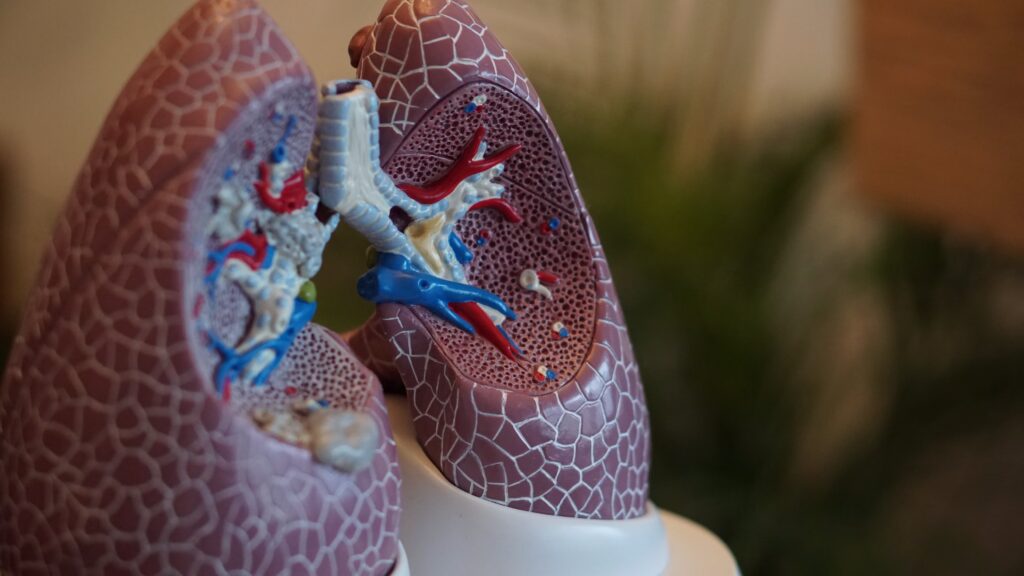
Bronchitis is a common respiratory condition that affects millions of Americans annually. While often dismissed as a simple cough, bronchitis has a complex pathophysiology that varies in severity and duration. Understanding its causes, treatment options, and potential complications is essential for both medical professionals and the general public.
Pathophysiology of Bronchitis
Bronchitis is characterized by inflammation of the bronchial tubes, leading to excessive mucus production and airway irritation. The condition can be classified into acute and chronic bronchitis. Acute bronchitis is typically viral, self-limited, and lasts less than three weeks, while chronic bronchitis is a form of chronic obstructive pulmonary disease (COPD), marked by persistent cough and sputum production for at least three months per year over two consecutive years.
Inflammation triggers the release of cytokines such as interleukin-8 (IL-8) and tumor necrosis factor-alpha (TNF-α), leading to neutrophilic infiltration and increased mucus gland hyperplasia. Bronchospasm may occur due to airway irritation, particularly in those with reactive airway disease.
Duration of Bronchitis
Acute bronchitis typically lasts two to three weeks, but some cases involve prolonged coughs lasting up to eight weeks. This lingering cough is often due to persistent airway inflammation and heightened cough reflex sensitivity.
Top 10 Most Common Pathogens
- Viruses (90% of cases)
- Rhinovirus
- Influenza A & B
- Parainfluenza
- Respiratory Syncytial Virus (RSV)
- Coronavirus (including non-COVID strains)
- Bacteria (less common, typically in smokers or immunocompromised patients)
- Mycoplasma pneumoniae
- Chlamydia pneumoniae
- Bordetella pertussis
- Haemophilus influenzae
- Streptococcus pneumoniae
Rationale for Treatments
Since most cases of bronchitis are viral, antibiotics are generally not recommended. However, treatment focuses on symptom management:
- Bronchodilators (e.g., albuterol) for bronchospasm, especially in asthmatics or COPD patients.
- Cough suppressants (dextromethorphan) for dry, irritating coughs.
- Expectorants (guaifenesin) to loosen mucus.
- NSAIDs or acetaminophen for fever and discomfort.
- Hydration and humidified air to thin mucus.
If bacterial infection is suspected (e.g., prolonged fever, purulent sputum, worsening symptoms), macrolides (azithromycin) or doxycycline may be used, though evidence for routine use remains weak.
Adjunctive Treatments
- Honey: Proven in studies to be more effective than dextromethorphan in reducing nighttime cough (Paul et al., 2007).
- Inhaled corticosteroids: Considered in persistent cough cases or underlying asthma.
- Antihistamines and decongestants: Useful in cases accompanied by upper respiratory tract symptoms.
Coexistence of Bronchospasm and Management
Up to 40% of bronchitis cases involve bronchospasm, particularly in patients with asthma or COPD. These patients benefit from short-acting beta-agonists (SABAs) like albuterol, and in severe cases, a short course of oral corticosteroids (e.g., prednisone 40 mg daily for 5 days) may be warranted.
Lingering Cough and Mechanism
About 25% of acute bronchitis cases result in a cough lasting over four weeks. The mechanism involves persistent airway inflammation and post-viral vagal hypersensitivity. Post-infectious cough may respond to inhaled ipratropium or cough neuromodulators like gabapentin in refractory cases.
Sinusitis and Pneumonia in Bronchitis
- Acute sinusitis coexists in approximately 30% of bronchitis cases due to nasopharyngeal inflammation and mucus stasis.
- Progression to pneumonia occurs in 5-10% of cases, especially in high-risk populations (elderly, smokers, immunocompromised individuals).
Prevention Strategies
- Annual influenza vaccination reduces bronchitis incidence.
- COVID-19 and pneumococcal vaccines lower secondary complications.
- Smoking cessation is the single most effective measure to prevent chronic bronchitis.
- Hand hygiene and mask-wearing in peak viral seasons limit transmission.
Who is Most Prone to Severe Illness?
- Smokers and COPD patients: Higher risk of progression to chronic bronchitis and pneumonia.
- Elderly individuals: Increased mortality from secondary infections.
- Immunocompromised patients (HIV, chemotherapy, transplant recipients): Prolonged and severe disease course.
- Asthmatics: More frequent bronchospasm and prolonged recovery.
Common Pitfalls in Diagnosis and Management
- Overprescription of antibiotics: Studies show 50-70% of bronchitis cases are inappropriately treated with antibiotics, leading to resistance.
- Failure to recognize asthma or COPD exacerbation: Some “bronchitis” cases are actually undiagnosed chronic lung disease.
- Ignoring pertussis: Consider in a persistent cough exceeding 2 weeks, especially in unvaccinated adults.
- Misdiagnosing GERD or postnasal drip: Chronic cough may stem from non-bronchitis causes.
Is Bronchitis Contagious?
Yes, viral bronchitis is highly contagious, spread through respiratory droplets. Patients are most contagious during the first 3-5 days of illness. Bacterial bronchitis (e.g., pertussis) is also transmissible but requires closer contact.
Conclusion
Bronchitis is often self-limited but can lead to prolonged symptoms and complications in vulnerable populations. Physicians must balance symptomatic relief with judicious antibiotic use while addressing underlying bronchospasm and persistent cough when necessary. Preventative measures such as vaccination and smoking cessation remain key strategies in reducing the burden of bronchitis.
References
- Paul IM, et al. “Effect of honey, dextromethorphan, and no treatment on nocturnal cough and sleep quality for coughing children and their parents.” Arch Pediatr Adolesc Med. 2007.
- Gonzales R, et al. “Principles of appropriate antibiotic use for treatment of acute bronchitis in adults.” Ann Intern Med. 2001.
- Smith SM, et al. “Over-the-counter medications for acute cough in children and adults in community settings.” Cochrane Database Syst Rev. 2014.
- Wenzel RP, et al. “Acute bronchitis.” N Engl J Med. 2006.